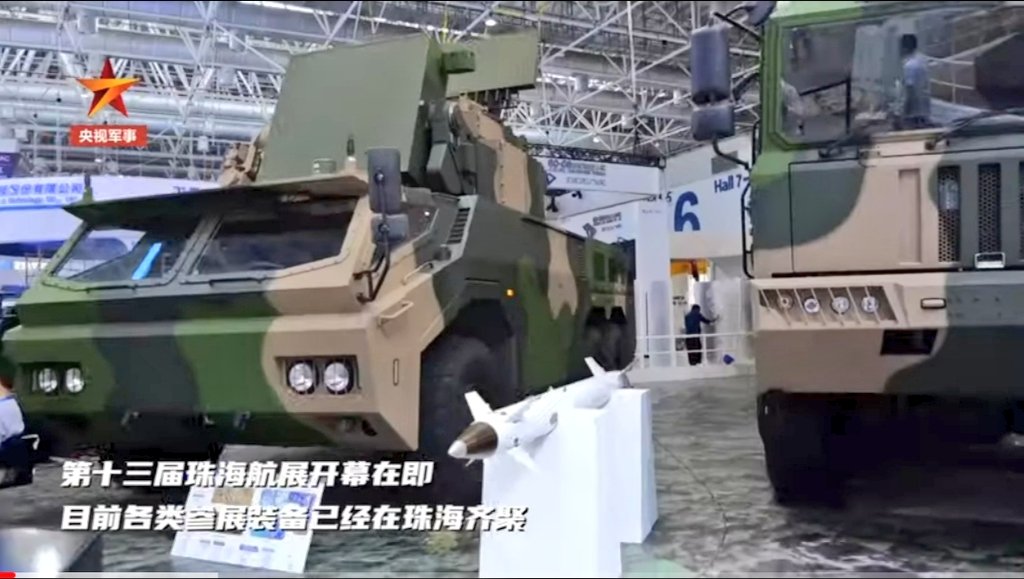China is reportedly negotiating significant arms deals with Saudi Arabia and Egypt as the two Middle Eastern states look to diversify their sources of armaments and reduce their reliance on the United States and Russia in the backdrop of the raging Ukraine war.
Middle East-focused intelligence service based in Beirut known as ‘Tactical Report’ recently stated that the Saudi Arabian Military Industries (SAMI) is currently in negotiations with China North Industries Group Corporation (Norinco), a Chinese state-owned defense company, to purchase weapons ranging from air defense systems to reconnaissance drones.
Weapons included in the potential deal are the Sky Saker FX80 unmanned aerial vehicle (UAV), the CR500 vertical take-off and landing (VTOL) UAV, the Cruise Dragon 5 and 10 loitering munitions, also known as suicide drones and the HQ-17AE short-range air defense (SHORAD) system.
Two systems stand out for their cutting-edge capabilities among the above weaponry on the list that Riyadh may be interested in. Given the growing usage of drones in modern warfare, as seen in the conflict in Ukraine, the Golden Eagle CR500 VTOL UAV is among the most important.
In November 2022, China North Industries Group Corporation (Norinco) declared that their Golden Eagle CR500 vertical take-off and landing (VTOL) unmanned aerial vehicle (UAV) had passed final inspections and been given the all-clear to be delivered to an “undisclosed customer.”
The strike-capable CR500 can be used for battlefield surveillance, target acquisition, electronic warfare, communication relay, and damage assessment missions.
It has coaxial rotors and can carry a variety of payloads depending on the task. More importantly, the CR500 can take off and land vertically, much like the F-35B Lightning II aircraft produced by the US-based Lockheed Martin.
Due to the ease of operations, the VTOL capability is quickly gaining popularity among crewed and uncrewed aircraft. On its part, VTOL drones combine the capability of rotorcraft and fixed-wing fighter jets. They can take off, hover and land vertically like a helicopter and don’t require runways or advanced piloting skills.
The CR500 can also reportedly work as a target spotter and guide tank fire, infantry fighting vehicles, and self-propelled artillery, thus enhancing its combat capability. It has a small structure that makes it simple to store and move, besides its ability to withstand strong winds and transport various kinds of electro-optical pods and payloads.
Another system garnering widespread interest in the potential China-Saudi Arabia deal is the popular Chinese air defense system – the HQ-17AE short-range air defense (SHORAD) system, which received clearance for export in 2021. It is the latest addition to the list of weapons purchase negotiations.

China’s new HQ-17AE short-range surface-to-air missile system has received export clearance. This is the latest version of the HQ-17 air defense system. It was reverse-engineered from the Russian system after Moscow refused to grant it the rights to domestic license manufacturing of the Tor-M1.
The HQ-17, in contrast to the Tor system, has modernized electronics, a new all-terrain launcher, and the capacity to data-link with other Chinese systems. It also features an IFF array on top of an electronically scanned array radar. The HQ-17AE variant goes further to build on these existing advanced capabilities.
According to the Tactical Report, negotiations are anticipated until the end of this year or the start of the following year. It was also mentioned that there were whispers that the entire transaction would be financed in Chinese yuan.
If a deal goes through, it would be another feather in China’s hat. It has steadily established a footprint in the Middle East, swaying traditional US allies like Saudi Arabia and the UAE. This was evidenced by Beijing’s role in mediating a peace deal between Saudi Arabia and Iran earlier this year.
Chinese Fighter Jets For Egypt
In a separate article, the Tactical Report stated that Egypt and China were negotiating to purchase the Chengdu J-10C multirole fighter.
The report comes amid speculations that a delegation from the Egyptian Air Force is expected to meet with representatives from the Chengdu Aircraft Industry Group this week as part of the Langkawi International Maritime and Aerospace Exhibition in Malaysia to continue conversations that started late last year.
According to a report that cited unnamed sources, the Chinese manufacturer presented the J-10C’s most recent upgrades during the meeting, including its active electronically scanned array (AESA) radar and modern electronic warfare system. Egypt is rumored to be interested in purchasing 12 of the fighter jets.
Egypt is turning to China as a potential supplier of armaments after mostly purchasing them from France, Germany, and Russia since Moscow can no longer produce military hardware for customers due to the ongoing war in Ukraine.
Before the Russian invasion of Ukraine, media reports indicated that potential export customers of the Russian Su-35 had backtracked from planned acquisitions due to the economic sanctions imposed on Moscow that primarily targeted oil businesses and military technologies.
This is potentially where the Chinese J-10C comes into the picture. EurAsian Times, however, could not independently verify these claims.
The J-10C is a medium-weight, all-weather jet capable of carrying fourth-generation air-to-air missiles like the PL-10 and PL-15, with ranges beyond optical range.
After its sale to Pakistan, China has been looking for more potential customers. The J-10C earned a reputation as the most powerful single-engine fighter in the world when it first entered service in 2018.
- Contact the author at sakshi.tiwari9555 (at) gmail.com
- Follow EurAsian Times on Google News